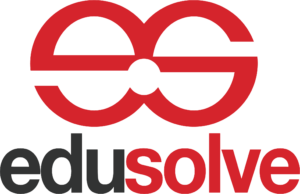Education is always changing. K–12 schools must change quickly in response to new regulations, technological advancements, instructional techniques, and student demands. However, putting successful and long-lasting change into practice is difficult and frequently encounters opposition. For this reason, school administrators, teachers, and other stakeholders who are dedicated to enhancing results must comprehend and implement the concepts of change management in K-12 schools institutions.
This thorough manual examines what constitutes good change management in the K–12 setting and offers doable tactics for implementing and maintaining change that promotes student achievement and school development.
1. The Importance of Change Management in K-12 Schools
The dynamic environment in which K–12 schools function is characterized by changing standards, a varied student body, financial restraints, and growing accountability. Even the best ideas may not work out when put into practice if change is not approached in a systematic manner.
The Significance of Change Management:
- Increases the ability to innovate
- Minimizes employee resistance and burnout
- Synchronizes people, procedures, and objectives
- Encourages student-centered change
- Ensures that new projects are sustainable.
A more resilient learning environment is produced in K–12 schools through effective change management, which fosters a culture of flexibility, teamwork, and ongoing development.
2. Understanding the Change Management Process
A road map for getting from the current situation to the intended future state is provided by the change management process. This entails cultural change in schools in addition to changes in procedures or curriculum.
Change Management Phases:
- Create a well-thought-out, staggered implementation strategy.
- Engage: Talk to and include all parties involved.
- Implement: Carry out the strategy, keep an eye on developments, and assist employees.
Clarity, accountability, and flexibility are made possible throughout the change process by employing this tiered strategy.
3. Leadership’s Role in School Change
The key to successful change is leadership. The behaviors, attitudes, and vision that they wish others to follow must be modeled by principals, district leaders, and instructional coaches.
Important Leadership Steps:
- Create and share a captivating vision.
- Develop empathy and openness to foster trust.
- Give groups the freedom to decide
- Give guidance and criticism.
In order to make change feel feasible and intentional rather than forced, strong leadership can build commitment and alignment.
4. Building a Change-Ready School Culture
Prior to starting any significant project, school administrators need to assess and foster a change-friendly culture. Fear, exhaustion, or a lack of knowledge are common causes of resistance. It is essential to foster a culture that is optimistic and risk-tolerant.
Cultural Factors Affecting Change:
- Being open and paying attention
- PLCs, or professional learning communities
- Mutual regard and psychological safety
- Joint responsibility for objectives and results
Change management in K–12 schools is made more practical and successful by leaders who consciously create a culture where creativity and teamwork are valued.
5. Engaging Stakeholders at All Levels
Involving all parties involved guarantees more support and more deliberate decision-making.
Engagement Techniques:
- Hold focus groups and surveys.
- Conduct town halls and listening sessions.
- Form advisory committees for educators and students.
- Continually update through meetings and newsletters.
- Give them the chance to comment and make changes.
Stakeholders are more inclined to support change and make significant contributions to its success when they feel heard and included.
6. Communicating for Clarity and Confidence
Communication is one of the most underutilized instruments in K–12 change management. In addition to explaining the “what” and “how” of change, leaders also need to explain the “why.”
Best Practices for Communication:
- Communicate clearly and without jargon.
- At every chance, reinforce the change vision.
- Talk openly about the difficulties and unknowns.
- Emphasize how the adjustment will benefit the staff and kids.
- Create avenues of communication that are two-way.
Maintaining communication at all levels of the educational system guarantees alignment and fosters trust.
7. Professional Development as a Catalyst for Change
The front-line agents of change are educators. However, a lot of change projects fall through because teachers don’t have the time, resources, or training to implement new methods.
Successful PD Techniques:
- Provide continuous, on-the-job training
- Align PD with the objectives of school improvement
- Make use of instructional coaches to provide guidance and assistance.
- Provide possibilities for peer cooperation.
- Assess the effect and modify the training as necessary.
Change is easier to achieve when educators feel empowered and supported.
8. Addressing Resistance and Overcoming Barriers
It’s normal to feel resistant to change, particularly when it challenges ingrained habits or beliefs. Leaders should interpret resistance as a sign of uncertainty or anxiety rather than as a display of defiance.
How to Handle Opposition:
- Actively hear issues
- Give justification and proof for the change.
- Find staff members who are “change champions.”
- Provide specialized assistance according to necessity.
- Acknowledge and deal with your feelings in response to change.
Strong leaders foster commitment by addressing resistance with compassion and encouragement rather than by imposing compliance.
9. Using Data to Guide and Monitor Change
To be sure that improvements are having the intended effect, data gathering and analysis must be ongoing. Leaders run the risk of making assumptions and losing sight of results when they don’t have data.
Data-Informed Methods:
- Establish measurable, unambiguous goals.
- Utilize both formative and summative data to track advancement.
- Examine disparities in equality and focus on interventions.
- Adapt tactics in light of the evidence.
- Honor data-driven achievements.
When used carefully, data helps ongoing improvement of change initiatives and turns into a tool for learning rather than judgment.
10. Sustaining Change Over Time
Without tools to enable continuity and long-term planning, even successful change programs might fail. The transition process should be designed with sustainability in mind from the beginning.
Sustainability Techniques:
- Record procedures and results
- Integrate modifications into practice and policy.
- To prevent knowledge loss, train several employees.
- Continue to use professional learning frameworks.
- Align funds and assets with long-term objectives.
In K–12 schools, good change management makes sure that improvements continue when a grant expires or a leadership change occurs.
Real-World Examples of School Change
Case Study 1: Fulton County Schools, Georgia
They improved outcomes on several campuses by using a systematic change management strategy to train teachers, include families, and monitor growth using data dashboards.
Case Study 2: Denver Public Schools, Colorado
To encourage independence and creativity, DPS established school-based innovation zones and a leadership pipeline. Targeted coaching, frequent progress reports, and stakeholder involvement helped to support the transformation, illustrating how careful change management can strengthen school communities.
Conclusion: Leading with Purpose and Persistence
While successful transformation is not guaranteed, change in education is. With a well-organized strategy, capable leadership, inclusive communication, and a dedication to equity, schools can confidently and clearly manage change.
In order to promote learning for all students, change management in K–12 schools involves more than just implementing new programs; it also entails bringing people, systems, and culture into alignment. School administrators may make a lasting difference that benefits present and future generations by placing a high priority on strategic planning, professional development, stakeholder involvement, and sustainability.






 Challenge: Funding and Sustainability
Challenge: Funding and Sustainability Opportunity: Leadership Pipelines
Opportunity: Leadership Pipelines




